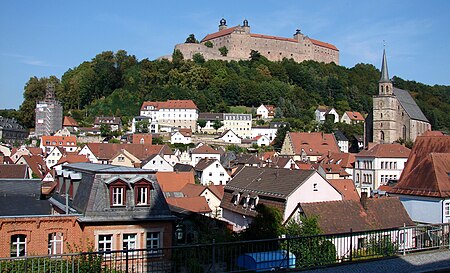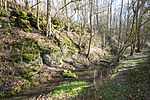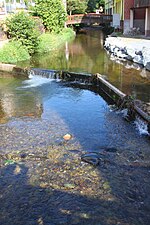Kulmbach
Kulmbach (district)Pages including recorded pronunciationsPages with German IPATowns in Bavaria

Kulmbach (German pronunciation: [ˈkʊlmˌbax] ) is the capital of the district of Kulmbach in Bavaria in Germany. The town, once a stronghold of the Principality of Bayreuth, is renowned for its massive Plassenburg Castle, which houses the largest tin soldier museum in the world, and for its sausages, or Bratwürste.
Excerpt from the Wikipedia article Kulmbach (License: CC BY-SA 3.0, Authors, Images).Kulmbach
Stettiner Straße,
Geographical coordinates (GPS) Address Nearby Places Show on map
Geographical coordinates (GPS)
| Latitude | Longitude |
|---|---|
| N 50.1 ° | E 11.433333333333 ° |
Address
Stettiner Straße 52
95326
Bavaria, Germany
Open on Google Maps








